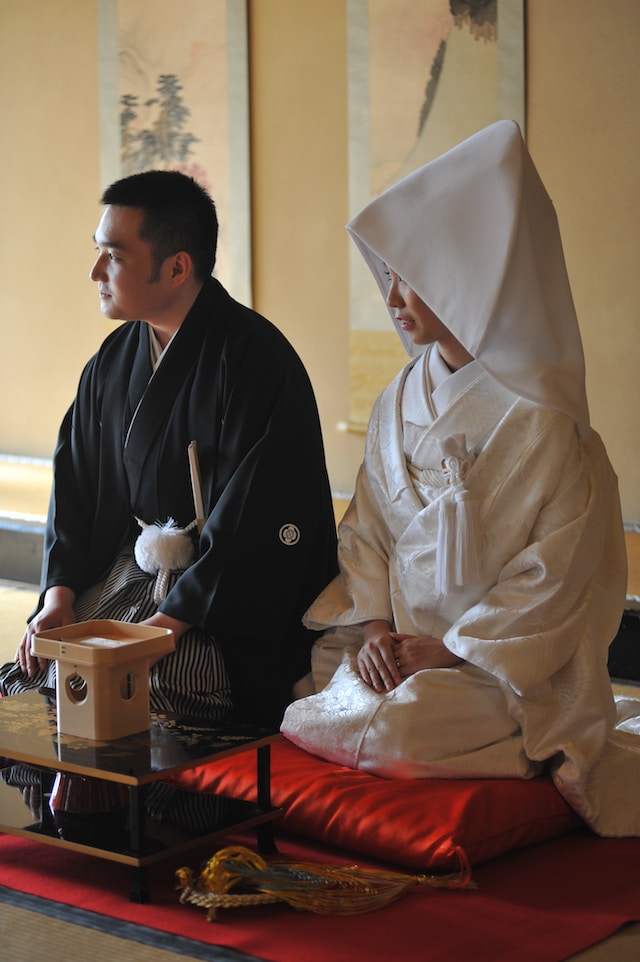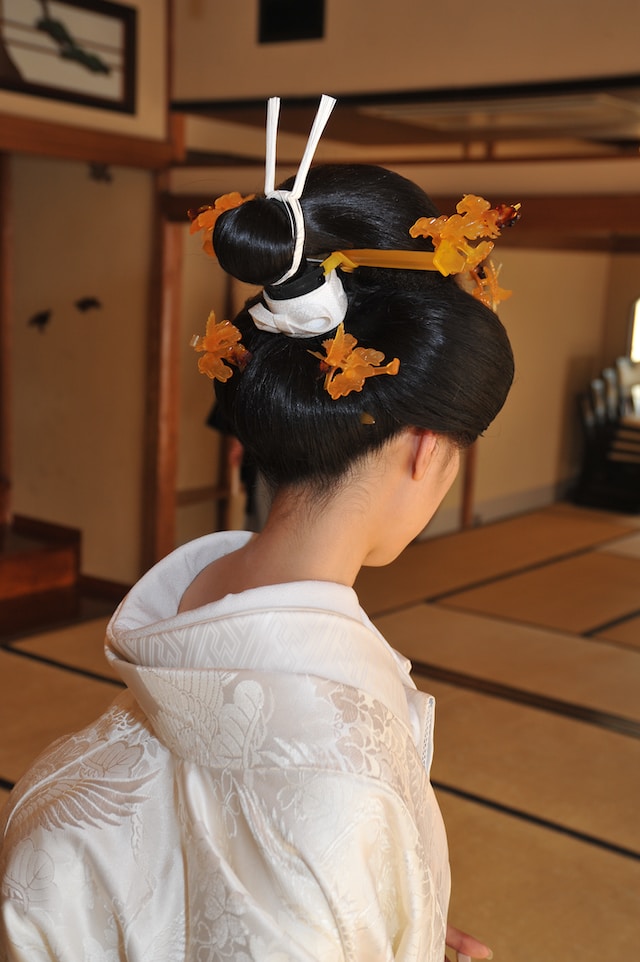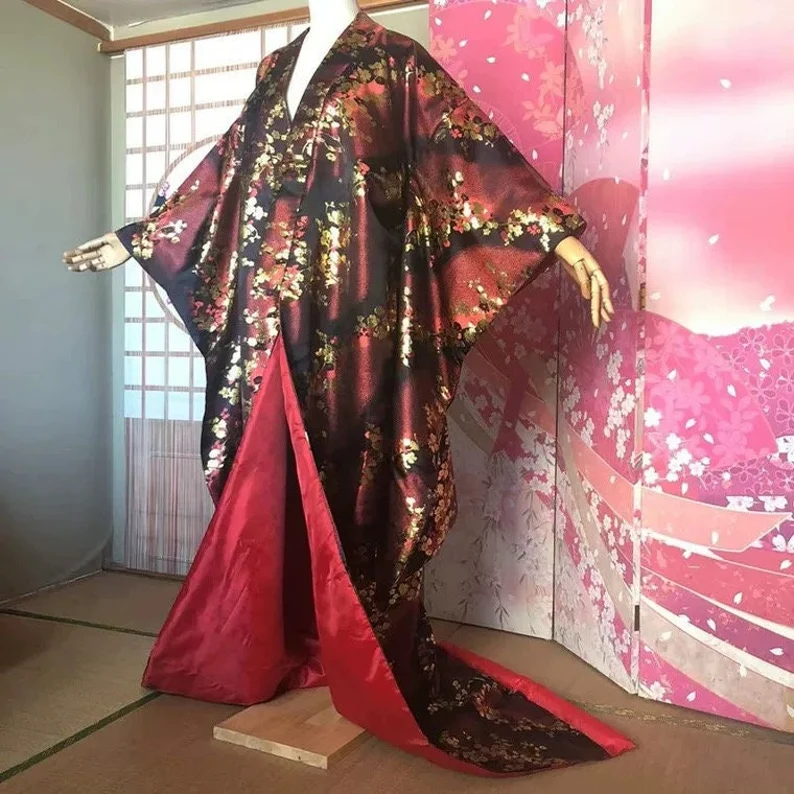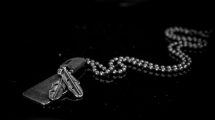As Wedding Know How editors, we write about things that we love and we think you'll like too. We have affiliate partnerships and sponsorship and may generate some revenue from these at no cost to you.
Japanese wedding dresses are a beautiful representation of the rich cultural heritage of Japan. Traditional Japanese weddings are known for their elegant attire, especially the bride’s dress. From the intricate designs and vibrant colors of the kimono to modern, contemporary styles, Japanese wedding dresses have evolved over time while still holding true to their cultural roots.
In this article, we’ll explore the fascinating history of Japanese wedding dresses and their cultural significance. We’ll also take a closer look at some examples of traditional Japanese wedding dresses, as well as contemporary variations that have emerged in recent years.
Whether you’re interested in learning more about Japanese culture or simply curious about the stunning wedding attire worn by Japanese brides, this article is sure to provide an insightful glimpse into the world of Japanese weddings. So, let’s go ahead and get started!
Japanese Wedding Dress Designs
From the simple elegance of the shiro-muku to the intricate embroidery of the uchikake, these dresses are not only beautiful but also convey important symbolic meanings.
Regional variations in design reflect Japan’s diverse cultural landscape and highlight the importance of tradition in Japanese weddings.
1. The Shiromuku
A shiromuku is a traditional Japanese wedding dress that’s all white, representing the bride’s purity and innocence. It consists of a long flowing robe with wide sleeves, a white hood called a wataboshi, and a white silk obi belt.
The dress is usually made of silk, and its pure white color symbolizes the bride’s desire to begin her new life with a clean slate.
The shiromuku is one of the most formal and traditional styles of Japanese wedding dresses and has been worn for centuries to honor the sacred bond of marriage.
2. Traditional Japanese Kimono (Uchikake)
The uchikake is worn as an outer robe over the bride’s kimono. It’s typically made of silk and features intricate embroidery, gold or silver accents, and a colorful design.
It’s brightly colored with shades of red, gold, or green, and the design may include auspicious symbols like cranes, cherry blossoms, birds, or pine trees.
3. Traditional Japanese Furisode
The furisode is characterized by its long, flowing sleeves that can extend up to 114 centimeters in length. A furisode wedding dress is a popular choice for modern Japanese brides who want to combine traditional elements with a more contemporary style.
The dress is often made of luxurious fabrics like silk and may feature intricate embroidery or beading. It’s typically worn with elaborate hairstyles and accessories to complete the bridal look.
4. Modern Fusion Wedding Dress
This Japanese style bridal dress is a beautiful fusion of traditional and modern design. The dress is made from a combination of kimono fabric and white tulle, creating a delicate and luxurious texture.
The top features an intricate embroidered design of a crane and floral motifs, representing good luck and prosperity in Japanese culture. The dress is an elegant choice for brides who want to honor their heritage while incorporating contemporary elements into their wedding day look.
5. Vintage Crane Kimono
This vintage Japanese kimono from the 1970s is a stunning piece of art. It features extra-long formal sleeves and is hand-painted with golden powder pastes, giving it a luxurious and elegant touch.
The kimono displays four-season motifs and royal garden scenery, showcasing the beauty and diversity of nature in Japanese art.
The attention to detail and quality of craftsmanship make this kimono a prized possession, perfect for collectors or those looking for a unique and exquisite piece of Japanese fashion history.
6. Japanese Brocade Uchikake
This handmade heavily brocaded uchikake is a true masterpiece of Japanese fashion. It’s custom-made to the buyer’s specific body measurements, ensuring a perfect fit and comfortable wear.
The dress is adorned with intricate brocade designs, adding a luxurious and elegant touch to the already stunning uchikake style.
This dress is a unique and valuable addition to any bridal wardrobe. Its custom-made nature ensures a one-of-a-kind piece that will be cherished for years to come.
History of Japanese Wedding dresses

As long as there have been weddings, there have been brides and their dresses. But it’s fascinating to see how these have evolved over time.
Shinto Weddings
The history of Japanese wedding dresses dates back to ancient times when weddings were typically held in Shinto shrines.
At this time, brides would wear a traditional Shinto wedding attire called a shiromuku.
This consisted of a white silk kimono and a white hood called a wataboshi, which covered the bride’s hair and face.
Edo Period
During the Edo period (1603-1868), weddings became more elaborate, and the bridal attire evolved to include more intricate designs and fabrics.
Brides during this period would wear an uchikake, which was a heavily embroidered silk outer robe worn over a white kimono.
The uchikake was often embellished with gold or silver threads and featured intricate designs of birds, flowers, or other traditional motifs.
Meiji Era
In the Meiji era (1868-1912), Western influences began to impact Japanese culture, and Japanese wedding dresses started to incorporate elements of Western-style attire.
This included the introduction of the white wedding dress, which was influenced by Western wedding traditions.
Japanese brides began to wear a Western-style wedding dresses for the ceremony and then changed into a traditional Japanese bridal gowns for the reception.
Taisho Period
During the Taisho period (1912-1926) and the early Showa period (1926-1989), Japanese wedding dresses became even more influenced by Western fashion.
The bridal gown became the primary wedding attire, and brides started to wear a long white dresses with a veil and train. This Western-style wedding dress became known as a “wedding gown” in Japan.
Modern Times
In modern times, Japanese wedding dresses continue to evolve and change with the times. Many brides still choose to wear a traditional Japanese wedding dress for the ceremony, while others opt for a modern Western-style wedding gown.
Some brides even choose to combine elements of both traditional and modern styles in their wedding attire.
Overall, the history of Japanese wedding dresses is rich and varied, reflecting the changing styles and traditions of Japanese culture over the centuries.
Today, Japanese wedding dresses continue to be an important part of the Japanese wedding ceremony, symbolizing the beauty, elegance, and tradition of this special occasion.
Cultural Significance of Japanese Wedding Dresses

Japanese wedding dresses, particularly the shiro-muku and iro-uchikake, hold significant cultural importance in Japanese weddings.
These traditional dresses are rooted in Japan’s history and carry a wealth of symbolism. Shiro-muku, the white kimono worn during the wedding ceremony, represents purity and innocence.
Meanwhile, the iro-uchikake, a more colorful and intricate kimono worn during the reception, comes in various colors and patterns that hold symbolic meanings. For instance, the color red signifies good luck and happiness while cranes represent longevity and good fortune.
Japanese wedding dresses also serve as family heirlooms, handed down from generation to generation. This tradition reinforces the importance of family and the continuity of tradition. While Western-style wedding dresses have become more prevalent in recent years, many couples in Japan still choose to wear traditional attire for their weddings.
As a result, the demand for Japanese wedding dresses has created a thriving industry for designers, seamstresses, and other wedding-related services. The cultural significance of Japanese wedding dresses emphasizes the importance of tradition, symbolism, and family in Japanese culture.
What Are Traditional Japanese Wedding Dresses?
The traditional Japanese wedding dress is an iconic symbol of Japanese culture and history. The attire is known for its elegant and elaborate designs and reflects the rich cultural heritage of Japan. The traditional Japanese wedding dress for the bride consists of a kimono, which is a long, flowing robe made of silk or other luxurious fabrics.
The kimono is often decorated with intricate designs, such as cranes, cherry blossoms, and other auspicious motifs, and can be of different colors and patterns, depending on the family’s preference. The wedding dress may also include a long, trailing train that the bride holds up with a decorative fan or other accessories.
The groom’s traditional wedding attire is known as a hakama, which is a wide, pleated skirt worn over a kimono. The hakama is often dark in color and represents the groom’s serious and responsible demeanor.
The bride’s hair is styled in a traditional Japanese hairstyle, such as a chignon or a bun, and is adorned with traditional accessories, such as hairpins, combs, and ornaments made of ivory or tortoiseshell.
The traditional Japanese wedding dress is not only a beautiful representation of Japanese culture and history, but it’s also a symbol of the couple’s commitment to each other and their respect for tradition.
While many modern couples in Japan now opt for Western-style wedding dresses, the traditional Japanese wedding dress remains an essential part of Japanese wedding culture and heritage.
Western-style Japanese Wedding Dress
The Western-style Japanese wedding dress has become increasingly popular in recent years, reflecting the influence of Western culture in Japan.
Western-style wedding dresses are often white, and feature a long flowing skirt, a fitted bodice, and lace or other decorative details. The dress may also include a train, a veil, or other accessories that are typically associated with Western-style weddings.
While the Western-style Japanese wedding dress is a departure from traditional Japanese wedding attire, it’s often paired with other traditional elements, such as the groom’s hakama and the bride’s hairstyle and accessories.
In this way, the Western-style dress is integrated into the overall wedding ceremony, creating a unique fusion of Japanese and Western cultures.
One of the advantages of the Western-style Japanese wedding dress is its versatility. The dress can be customized to suit the bride’s individual style and preferences, while still respecting the cultural significance of the wedding ceremony.
Many brides also choose to wear a traditional Japanese wedding dress during the ceremony and switch to a Western-style dress for the reception, creating a stunning visual contrast between the two styles.
The Western-style Japanese wedding dress represents the blending of cultures and reflects the changing cultural landscape of Japan. It’s a beautiful and unique expression of individual style and cultural heritage, and it continues to evolve with each passing year.
Japanese Bridal Accessories

Japanese bridal accessories add an extra layer of elegance and sophistication to the overall wedding attire. Each accessory has its own symbolic meaning and cultural significance, making them an essential part of the traditional Japanese wedding ceremony and adds a touch of elegance and sophistication to the overall look. Here are some of the most common Japanese bridal accessories:
- Hairpins
Japanese brides often wear decorative hairpins made of ivory, tortoiseshell, or other materials. These hairpins are often embellished with pearls, flowers, or other motifs, and are used to secure the bride’s hair in a traditional Japanese hairstyle.
- Fans
Japanese brides typically carry a decorative fan during the wedding ceremony. The fan is used to symbolically cover the bride’s face, representing her modesty and shyness.
- Obi
The obi is a decorative sash worn around the waist of the bride’s kimono. The obi can be made of silk or other luxurious materials and is often decorated with embroidery or other embellishments.
- Jewelry
Japanese brides often wear traditional jewelry, such as pearls, which symbolize purity, and other precious gems. These jewelry pieces may be family heirlooms that have been passed down through generations.
- Tabi Socks
Japanese brides wear traditional white socks called tabi with their wedding attire. These socks have a split toe, which allows the bride to wear traditional Japanese sandals called zori.
Color Symbolism of Japanese Wedding Dresses
In Japanese culture, colors hold great symbolic significance, and this is also true for wedding dresses. The most common color for traditional Japanese wedding dresses is white, which represents purity and innocence. However, there are other colors that are also considered auspicious and may be incorporated into the wedding dress or accessories.
For example, red is a color that is often associated with happiness, good fortune, and love. Some brides may choose to incorporate red into their wedding attire by wearing a red obi or including red accents in their hair accessories.
Gold is another color that is considered lucky in Japanese culture, as it represents wealth and prosperity. Some brides may choose to incorporate gold embroidery or other gold accents into their wedding dresses or accessories.
In recent years, pastel colors such as pink, blue, and lavender have become increasingly popular for Japanese wedding dresses. These colors are often used to add a touch of modernity to the traditional wedding attire and to reflect the bride’s personal style.
Overall, the color symbolism of Japanese wedding dresses is closely tied to the culture’s traditional beliefs and values. Each color holds its own unique significance, and the bride may choose to incorporate these colors into her wedding dress or accessories based on personal preference and cultural traditions.
Contemporary Japanese Wedding Dress

Contemporary Japanese wedding dresses have evolved to incorporate both traditional and modern elements. While some brides still choose to wear a traditional shiromuku or uchikake for the ceremony, many opt for a Western-style wedding gown or a fusion of the two styles.
Modern Japanese wedding gowns come in a variety of styles, from elegant and classic to trendy and avant-garde. They often feature delicate lace, intricate beading, and other embellishments, and can come in a range of colors beyond just white. Brides may also choose to wear a veil, tiara, or other accessories to complete their look.
One trend in contemporary Japanese wedding dresses is the incorporation of Japanese motifs and design elements. For example, some dresses may feature cherry blossoms, cranes, or other traditional Japanese motifs embroidered onto the fabric.
In addition to the wedding gown, contemporary Japanese brides also have a range of options for their reception dresses. Many choose a short white dress or a colorful kimono, while others opt for a modern cocktail dress or jumpsuit.
Japanese Wedding Hairstyles

Japanese wedding hairstyles are an essential part of traditional Japanese wedding attire and are designed to complement the bride’s overall look. Some of the most common Japanese wedding hairstyles include:
- Shimada
The Shimada is a traditional Japanese hairstyle that is characterized by a high bun at the back of the head. The hairstyle is often adorned with a decorative hairpin or comb, and the front of the hair is styled in soft waves or curls.
- Katsuyama
The Katsuyama is a modern take on the traditional Japanese wedding hairstyle and is characterized by loose waves and a low bun at the nape of the neck. The hairstyle is often adorned with floral or jeweled hairpins.
- Sakai
The Sakai is a simple yet elegant Japanese wedding hairstyle that features a low bun at the nape of the neck. The hair is styled in loose waves, and the front is usually styled in a softly side-swept fringe.
- Tsubaki-Yose
The Tsubaki-yose is a Japanese wedding hairstyle that features loose waves and a high bun at the back of the head. It’s often held together with a decorative hairpin or comb, and the front of the hair is styled in soft waves or curls.
- Yuiwata
The Yuiwata is a Japanese wedding hairstyle that is characterized by a high bun at the back of the head and soft, side-swept bangs. It’s usually held together with a comb or hairpin, with waves or curls in the front.
Influences from Other Cultures
Japanese wedding dresses, also known as “shiro-muku” or “iro-uchikake,” have been influenced by various cultures throughout history. Here are some of the key influences:
- Chinese Influence: The Tang Dynasty of China (618-907) heavily influenced Japanese culture during the Nara period (710-794) and Heian period (794-1185). During this time, Chinese-style wedding dresses made their way into Japan. These dresses were characterized by elaborate embroidery and were made from luxurious fabrics such as silk and satin.
- Western Influence: In the 19th century, Japan opened its ports to foreign trade, and Western culture began to influence Japanese fashion. Western-style wedding dresses, with their white color and full skirts, became popular among Japanese brides.
- Kimono Influence: Traditional Japanese wedding dresses, known as “uchikake,” are based on the kimono, a traditional Japanese garment. Uchikake is typically made of silk or brocade and is decorated with elaborate designs and embroidery. Uchikake is worn over a white kimono called a “shiro-maku,” which represents purity.
- Samurai Influence: During the Edo period (1603-1868), samurai culture heavily influenced Japanese fashion. Samurai brides would wear a formal, black kimono called a “montsuki,” which featured the family crest. The bride would also wear a white headdress called a “tsuno-kakushi,” which covered her forehead and symbolized her resolve to be a good wife.
FAQs about Japanese Wedding Dresses
What color do Japanese brides wear?
Japanese brides traditionally wear white wedding dresses as a symbol of purity and innocence.
Why are Japanese wedding dresses red?
Japanese wedding dresses are not traditionally red, but a red uchikake may be worn as a symbol of good luck and prosperity.
Can foreigners wear kimono?
Yes, foreigners can wear kimono. It’s a traditional Japanese garment that can be worn by anyone regardless of nationality.
What is the male version of a kimono called?
The male version of a kimono is called a “yukata.” It’s a lighter and more casual garment typically worn in summer.
What do you wear under a kimono?
The traditional undergarment worn under a kimono is called a “hadajuban.” It’s a white, knee-length robe made of lightweight fabric.
Wrapping Up
Japanese wedding dresses have a fascinating history and cultural significance that have influenced their designs throughout the centuries. The fusion of various cultures such as Chinese, Western, and traditional Japanese culture has created unique and beautiful dresses that embody values of purity, beauty, and tradition.
The concept of “wabi-sabi” is also reflected in the beauty of Japanese wedding dresses, making them not just visually stunning but also deeply meaningful. These dresses are a testament to the rich and diverse cultural heritage of Japan and continue to captivate people around the world.

















